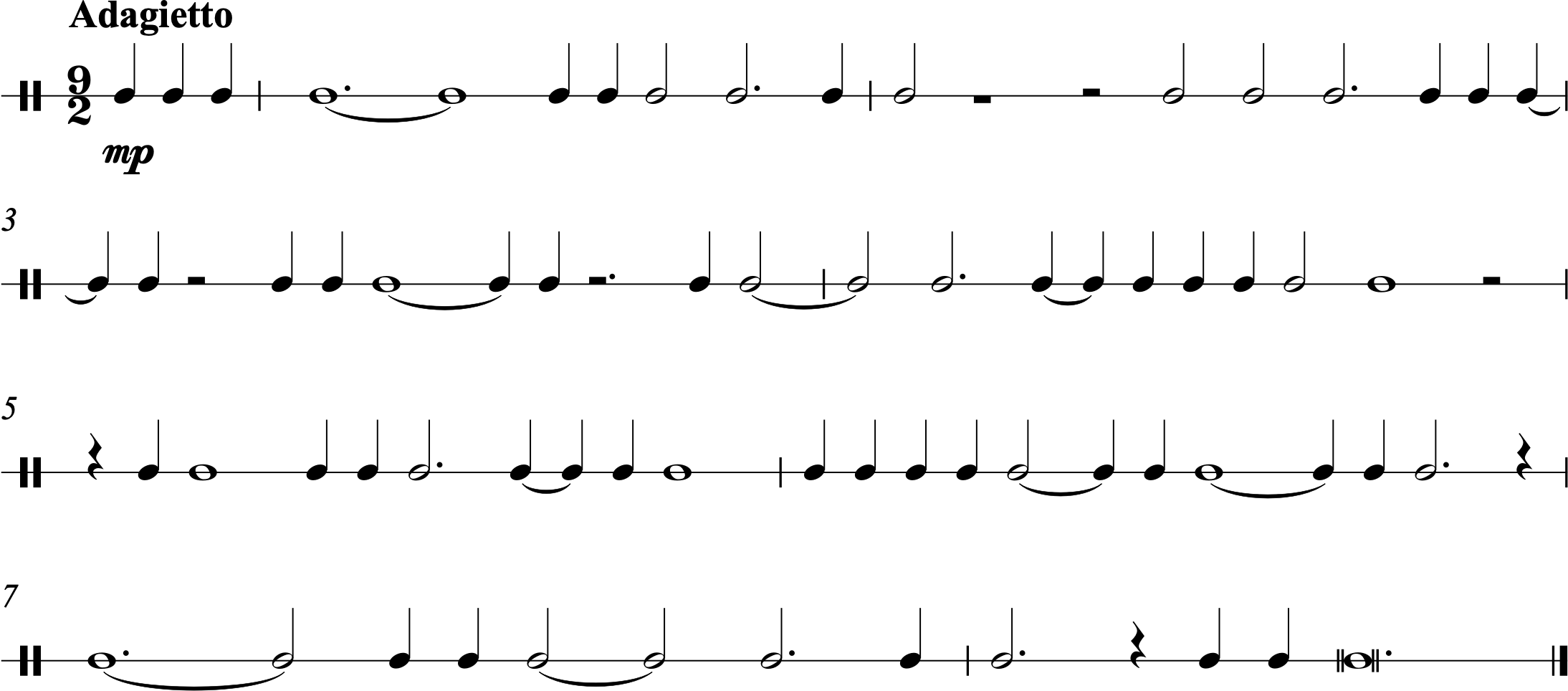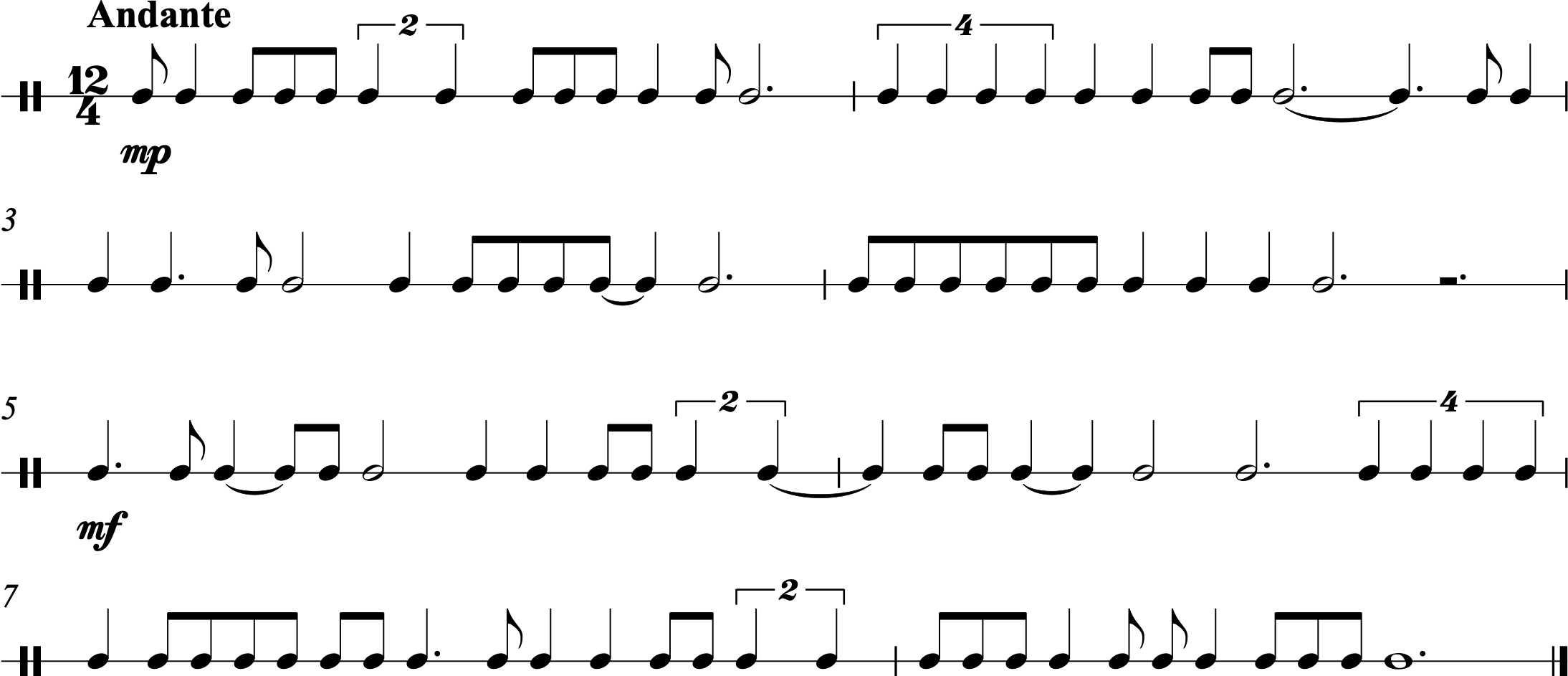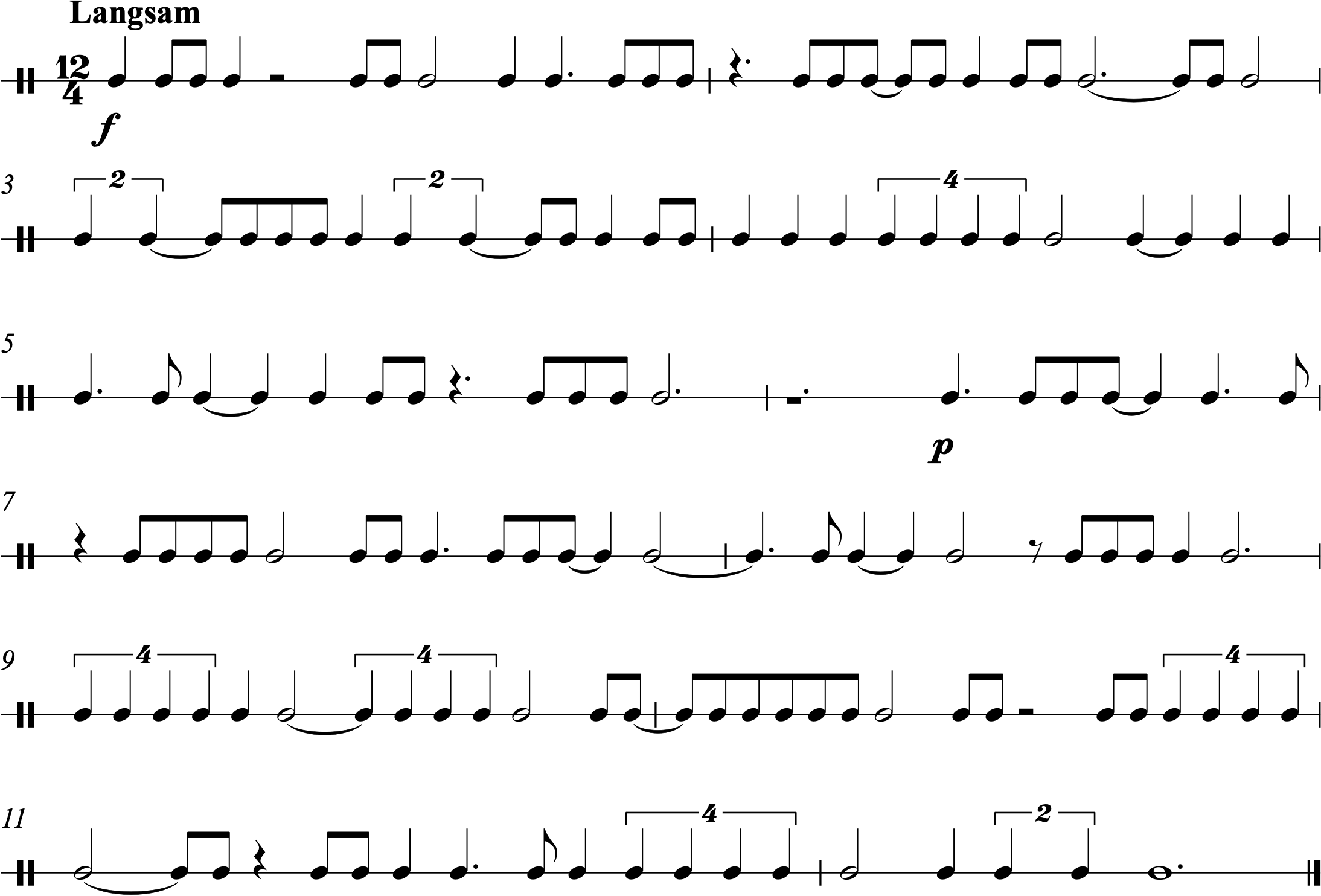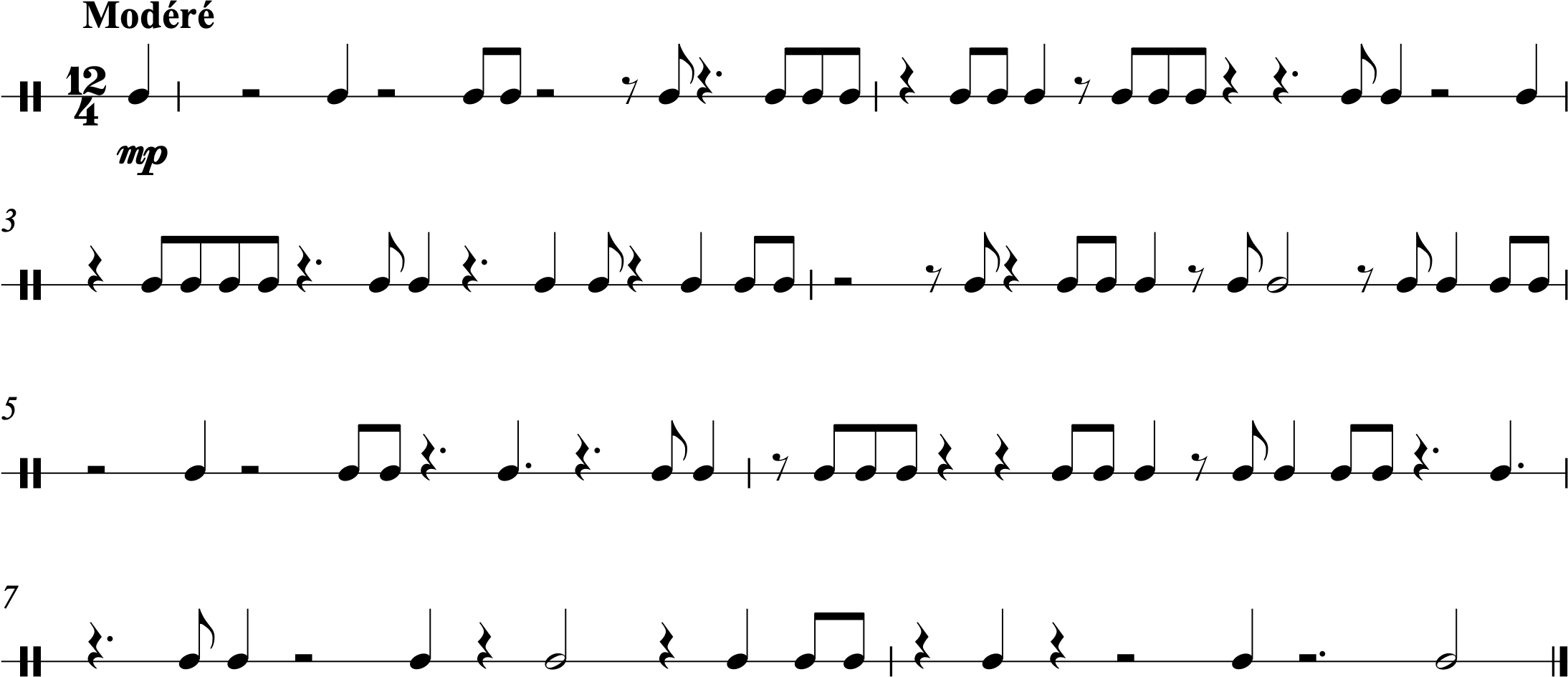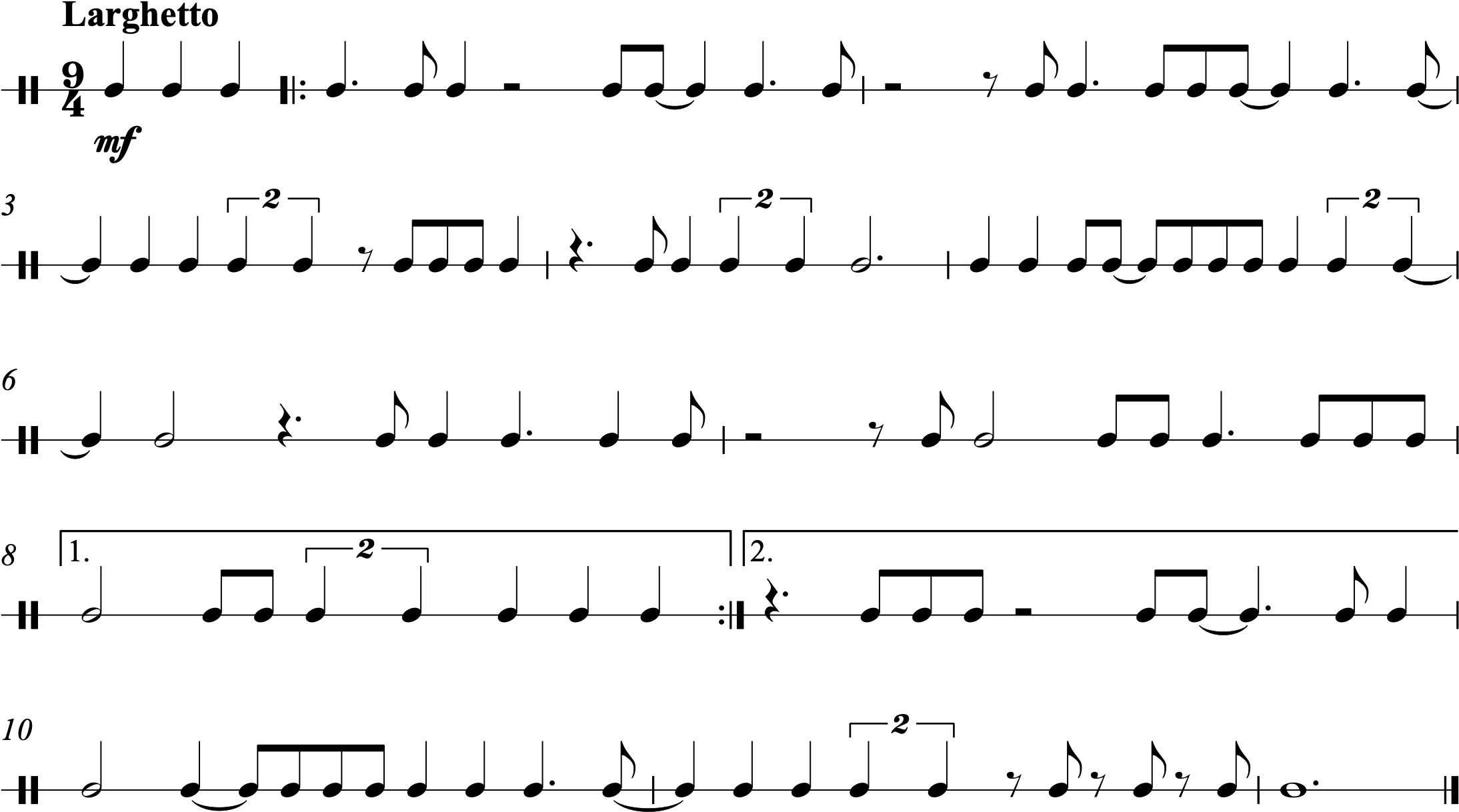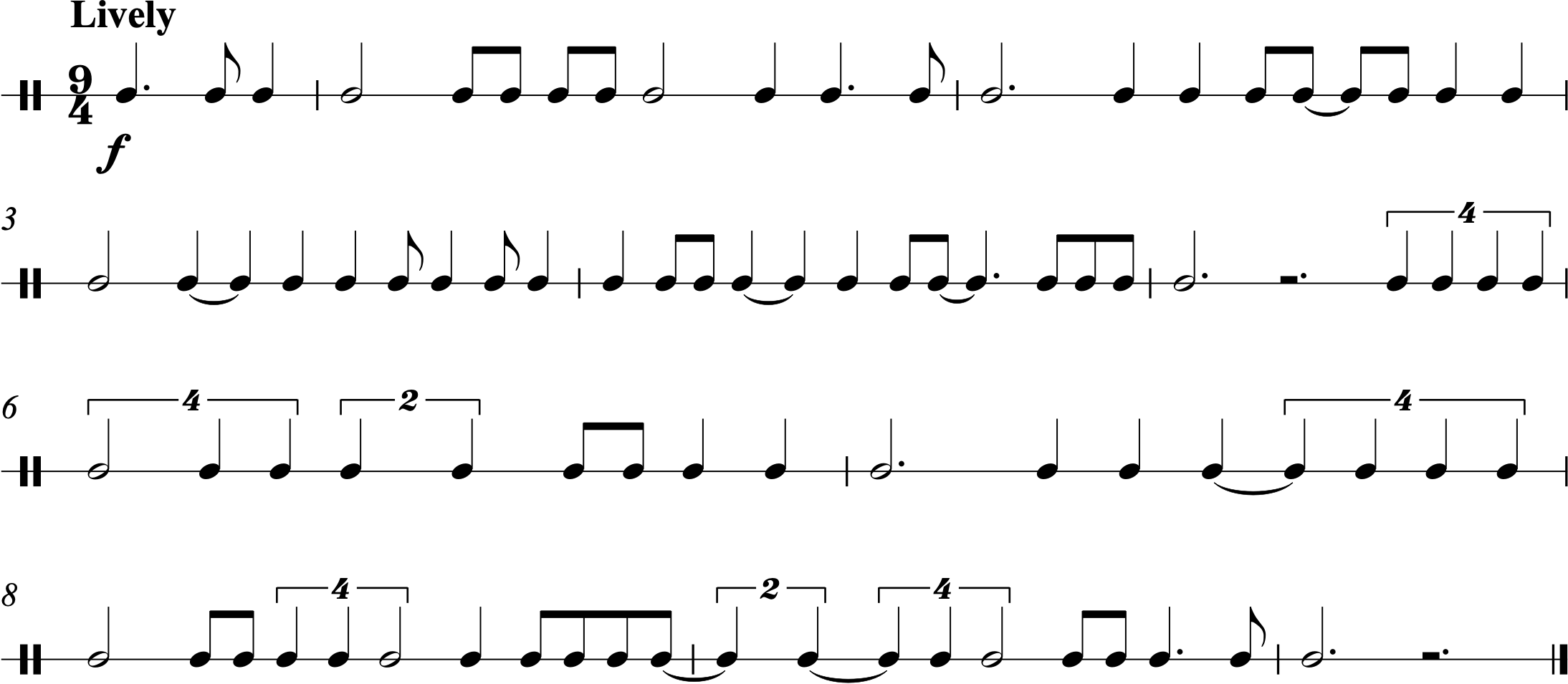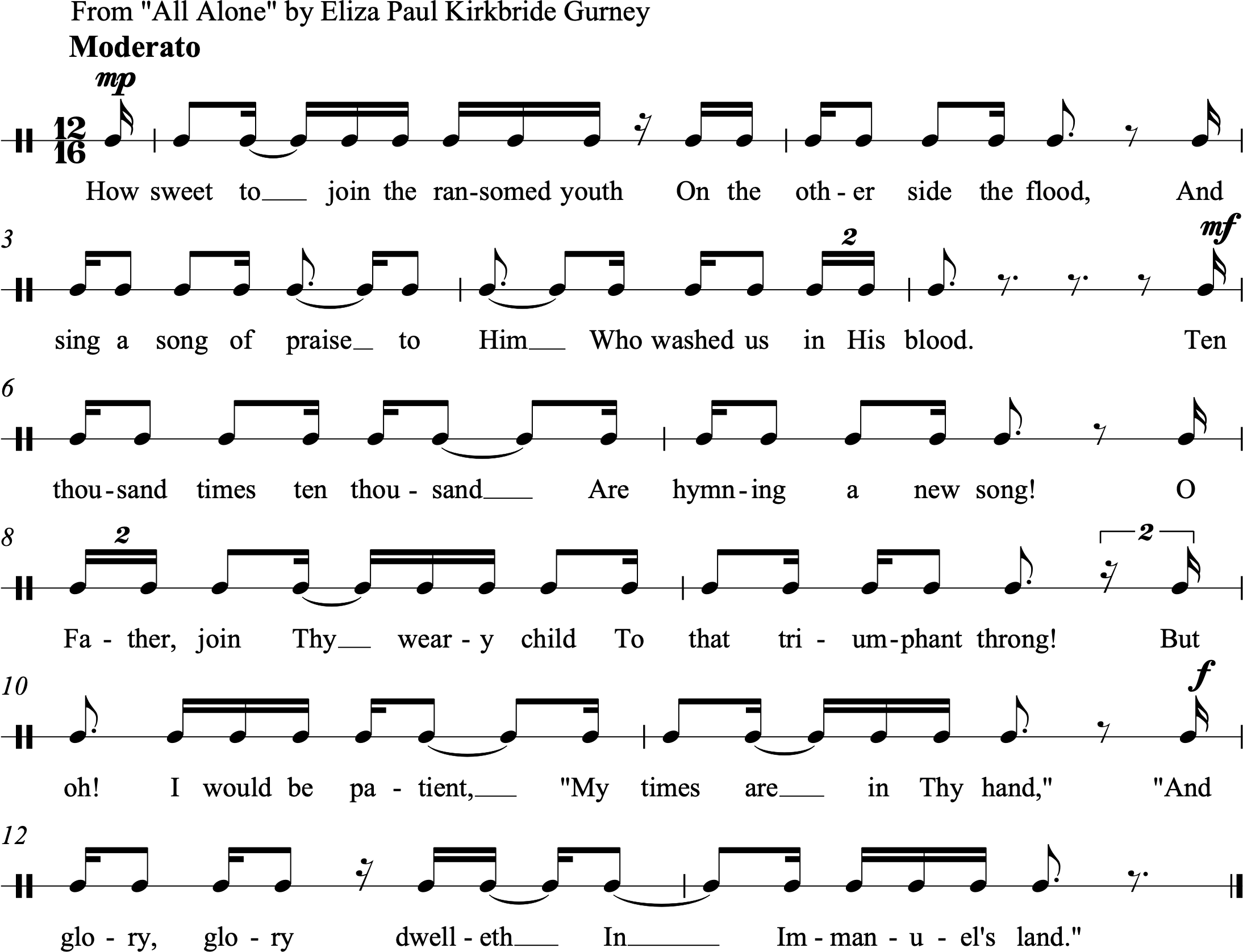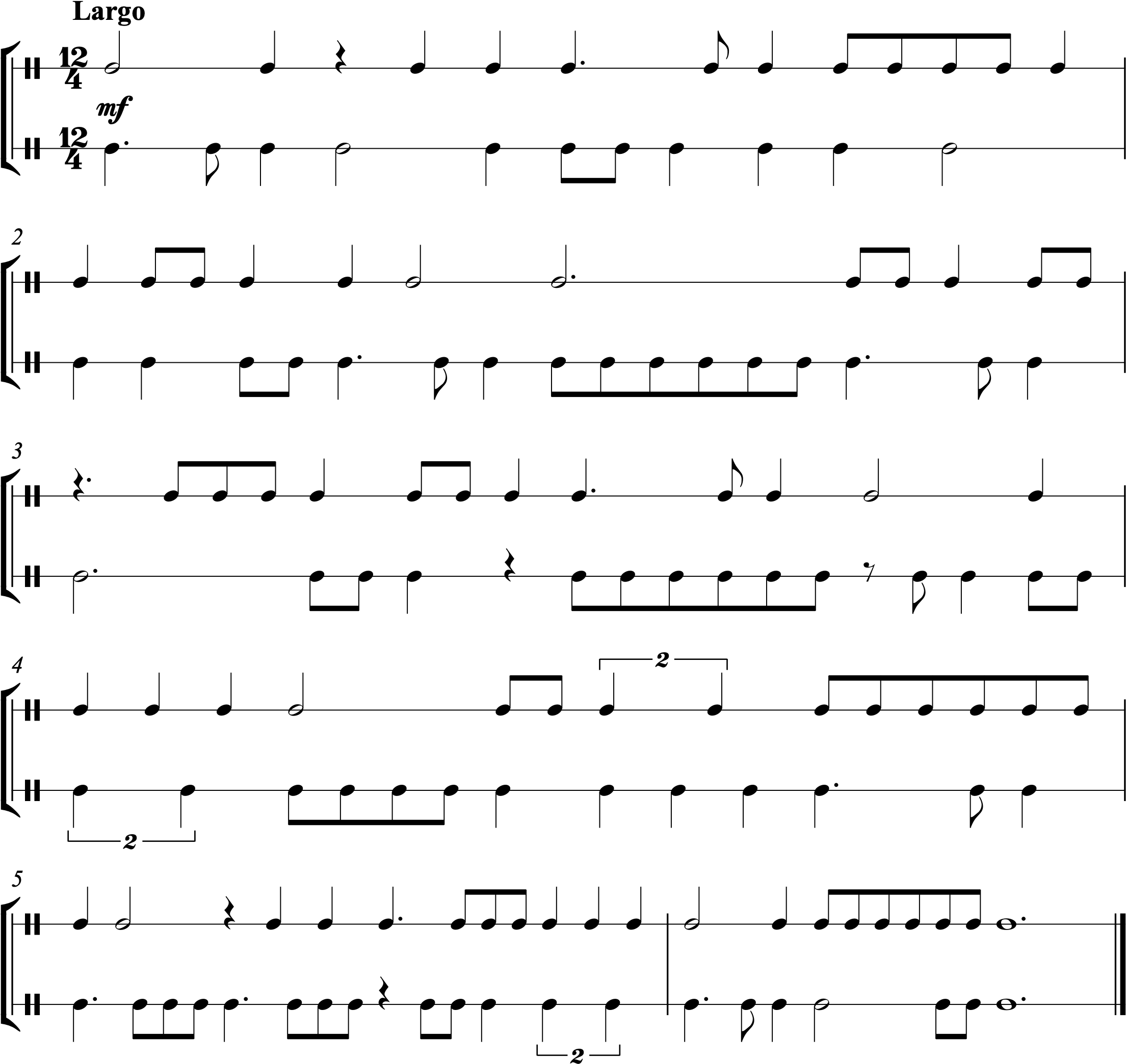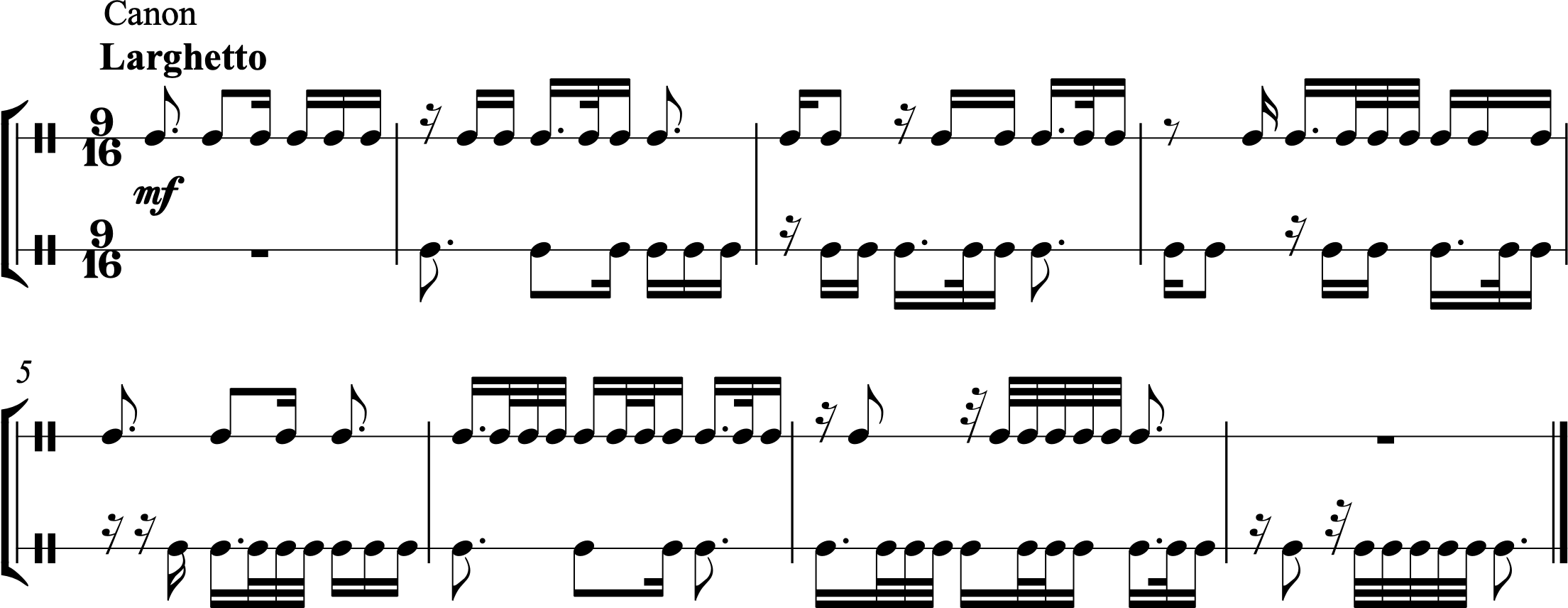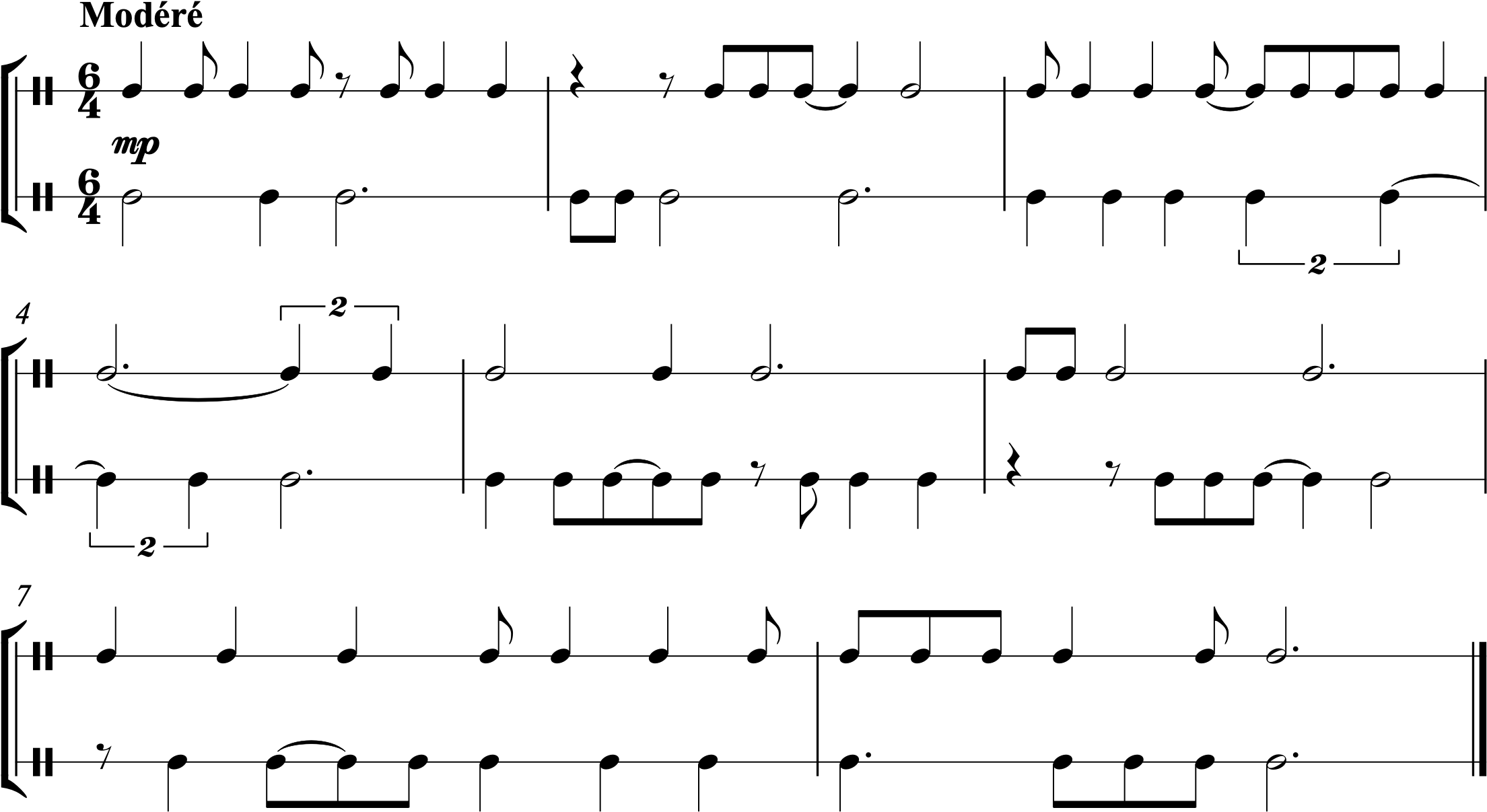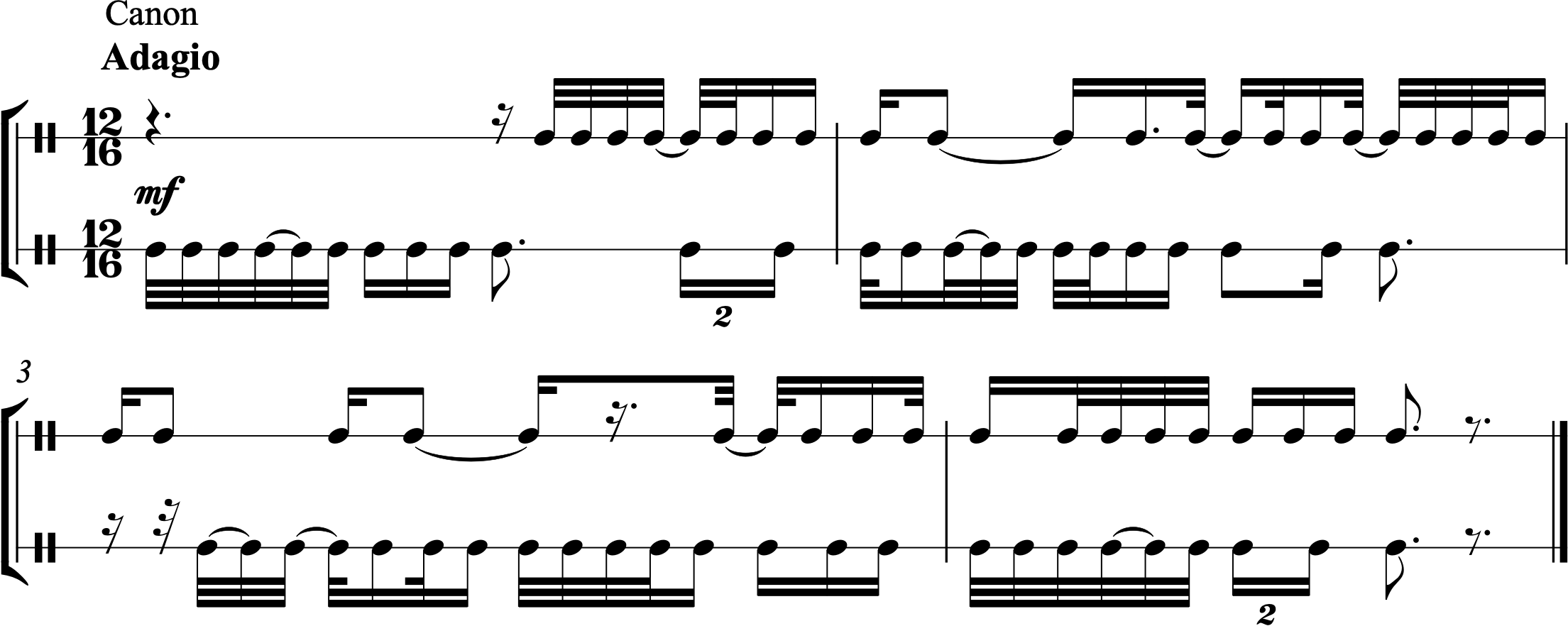Chapter 14: Compound Meter—beat values other than dotted quarter notes
About This Chapter
About This Chapter: In Chapter 13, we explored simple meter examples that featured something other than the quarter note as the beat. In this chapter, we’ll do something similar in compound meter. We’re used to the dotted quarter note serving as the beat in compound meters, but other rhythmic values can serve as the beat instead.
In the example below, all three measures sound identical—they’re just notated differently. Measure 1 looks the most familiar since it’s notated in 9/8. In measure 2, the 9/4 meter means that the dotted half note is the beat (“1”), the quarter notes are the divisions (“2 la li”), and the eighth notes are subdivisions of the beat into six parts (“3 ta la ta li ta”). In measure 3, the same rhythms appear in 9/16: the dotted eighth note is the beat (“1”), the sixteenth notes are the divisions (“2 la li”), and the thirty-second notes are the subdivision of the beat into six parts (“3 ta la ta li ta”). Remember that the bottom number of the time signature tells us what rhythmic value is the division of the beat in compound meters. You can figure out the rhythmic value of the beat by adding together three divisions.
As in Chapter 13, make sure you take a minute before performing the examples in this chapter. Think through what each rhythmic value is (beat, division, subdivision, etc.) and which rhythmic syllables to use for each.
Section A—The dotted half note as the beat
Practice
Practice A:
 Practice by performing along with this audio file, which features a metronome click and the notated rhythm. You will hear two measures of wood block to establish the tempo before the exercise begins.
Practice by performing along with this audio file, which features a metronome click and the notated rhythm. You will hear two measures of wood block to establish the tempo before the exercise begins.
Next, try performing along with this audio file, which features the notated rhythm but no metronome click. You will hear two measures of wood block to establish the tempo before the exercise begins.
1.
2.
3.
4.
Section B—The dotted eighth note as the beat
Practice
Practice B:
 Practice by performing along with this audio file, which features a metronome click and the notated rhythm. You will hear one measure of wood block to establish the tempo before the exercise begins.
Practice by performing along with this audio file, which features a metronome click and the notated rhythm. You will hear one measure of wood block to establish the tempo before the exercise begins.
Next, try performing along with this audio file, which features the notated rhythm but no metronome click. You will hear one measure of wood block to establish the tempo before the exercise begins.
5.
6.
7.
8.
Section C—The dotted sixteenth note as the beat
9.
10.
Section D—The dotted whole note as the beat
11.
12.
Section E—More examples featuring beat values other than dotted quarter notes
13.
14.
15.
16.
17.
18.
19.
20.
21.
22.
23.
24.
25.
26.
27.
28.
29.
30.
31.
32.
Section F—Two-part rhythms featuring beat values other than dotted quarter notes
33.
34.
35.
36.
37.
38.
39.
















